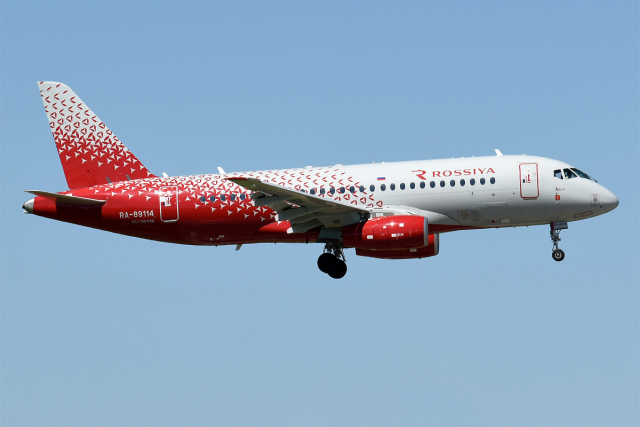The coloring of the aircraft not only protects it from corrosion, but is also a distinctive sign of the manufacturer or airline. It happens that airliners are decorated for memorable dates or significant events. And if military aviation is restrained and practical in this regard, then the design of civilian aircraft is often left to designers and modern artists. You can try yourself as an industrial designer right now: the acceptance of works for the Design Act 2022 competition has been extended until October 16, where you can offer your own version of the fuselage livery coloring for the newest MS-21 airliner with Russian PD-14 engines.
We talk about the history and current trends of aviation models for civil aviation.
ID Suit
Today, it is customary to use the term "livery" to denote the color scheme and other visual identifiers of civil aircraft. Initially, the livery is a type of European suit for servants, the elements of which – colors, coat of arms − denoted belonging to a certain wealthy house. Later liveries began to be called decorations of stagecoaches, trains, steamships, and with the spread of civil aviation in the XX century – and airplanes. Over time, aviation liveries have become an important element of corporate identity and even an object of fashion and modern art.
It is worth saying that in terms of fashion, airplanes are similar to people: most airliners in the world do not strive to stand out and "dress" quite standardly. Designers of aircraft manufacturers and airlines most often use a basic set of elements sufficient for recognition and ease of use of winged machines. As a rule, this is a logo consisting of a text part and an airline logo, and the coloring of the aircraft in brand colors.
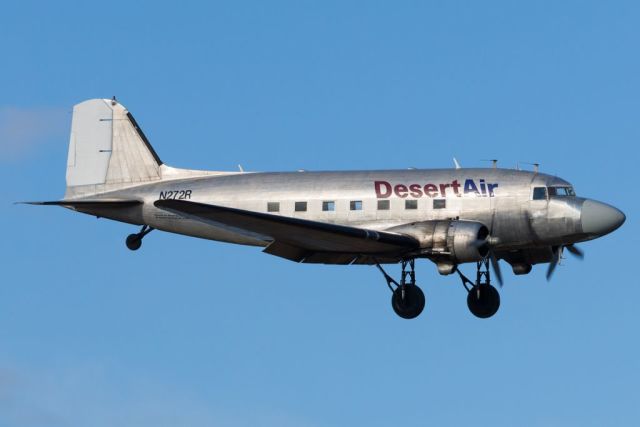
DesertAir Douglas DC-3 in metal livery. Photo: Lance C Broad / wikipedia.org
However, having seen metal airliners produced before the Second World War, we would be surprised at their coloring – it was practically absent. Aircraft manufacturers did not immediately find the right approach to painting aircraft and preferred to produce them in the "bare metal" style. In addition, the paint gave the aircraft extra weight, which could reach 300-400 kg. In addition, the polished metal cars looked literally brilliant then.
Stripes, bright colors or strict white
Since the mid-1960s, with the advent of high-quality primers and new paint application technologies, aircraft have been "dressing up" in livery with full painting. On the one hand, this made it possible to protect the structure from harmful environmental influences, and on the other hand, to increase the recognition of the airliner and even convey the right message to passengers.
The design of the aircraft, and most importantly – the impetuous nature of the metal birds, themselves prompted the designers with the first visual solutions. One of the first elements of the livery was the "chitline" – a horizontal strip across the entire side, hiding a number of portholes. Then it was invented to extend it to the tail of the plane in the form of a hockey stick. Today, such aircraft coloring is rare and is perceived rather as "retro".
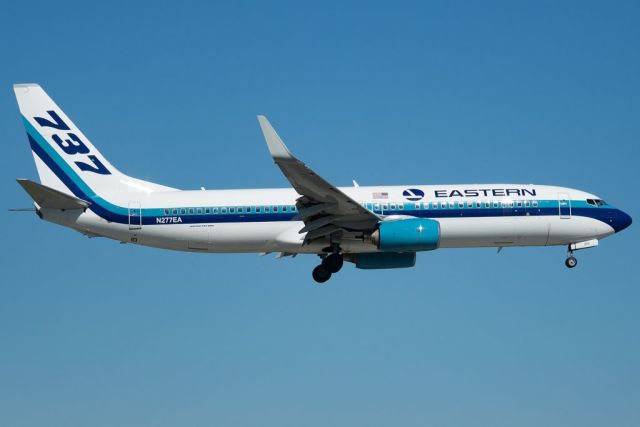
Boeing 737 Eastern Air Lines in the "chitline" coloring book. Photo: Venkat Mangudi / wikipedia.org
The American air carrier Braniff International was one of the first to completely paint airplanes in bright colors in the 1960s. They used beige, turquoise, orange and other colors. This coloring was part of the advertising campaign "No to nondescript planes", which, in addition to the design of the exterior and interior of the aircraft, included, for example, "space" outfits of flight attendants.
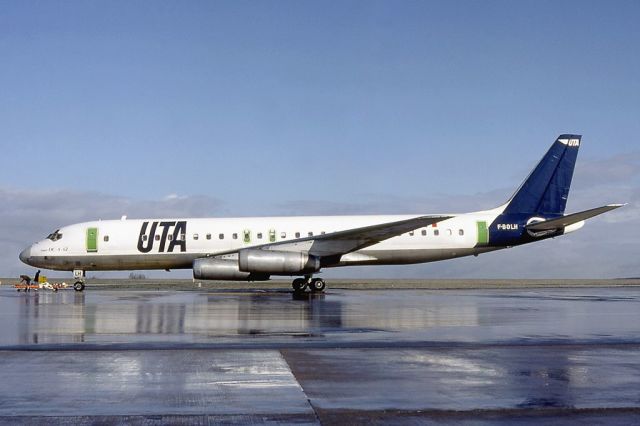
UTA DC-8 in Eurowhite livery. Photo: Michel Gilliand / wikipedia.org
Many airlines still "dress" their boards in bright colors, but still the livery, called "Eurowhite" or "European white", turned out to be the most tenacious. In this case, the main color is white, and the company logo becomes the brightest element. The spread of aviation leasing has made this concept popular: it is easier to transfer a white aircraft from one company to another without spending a lot of money on branding. In addition, the white livery has a number of advantages: it shows defects better and reflects sunlight better.
High-style clothing
Aircraft fuselages are often used to mark an important event, or simply for advertising, and sometimes planes "sell" the image of the country. To do this, national air carriers decorate the sides in the colors of their country or its recognizable symbols. The Japanese draw Pokemon, the Dutch "cover" planes with porcelain tiles, and this year one of the SSJ-100 aircraft received a new livery with three horses in the airline Rossiya, an image sung in Russian literature.
Photo: Rossiya Airlines Let's continue the theme of Russian "Superjets" and national symbols. Yamal Airlines is the largest air carrier in the West Siberian region of Russia. Its fleet today consists of 15 SSJ-100 aircraft, painted in the corporate colors of the Yamalo-Nenets Autonomous Okrug – white, blue, blue and red, and a polar bear smiles from the tail of the aircraft. This choice is not accidental – Yamal aircraft play an important role in the life of the Far North.

Photo: Yamal Airlines Azimut Airlines, based at the Platov International Airport in Rostov-on-Don, is responsible for the southern direction of flights. The liveries of Azimuth's "Suprejets" match the southern nature – bright, evocative of the sea and the sun. In 2020, a stylized image of a horse, the symbol of the free Don, appeared on one of the Azimut aircraft.
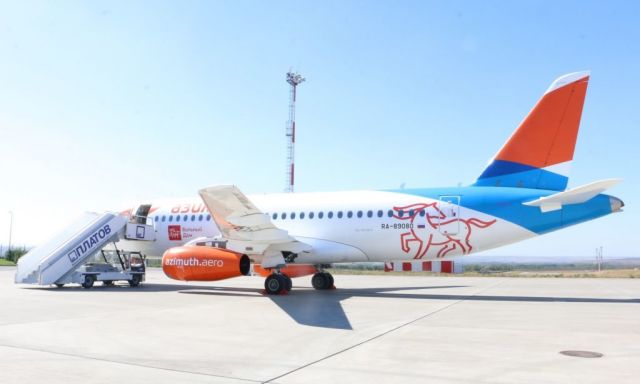
Photo: Azimut Airline
In 2013, when Aeroflot celebrated its 90th anniversary, a national competition was announced for the best festive coloring of the aircraft. The SSJ-100 fuselage was chosen as the "canvas", and the winner was the "Khokhloma" layout, which was implemented. It turned out bright and very recognizable.
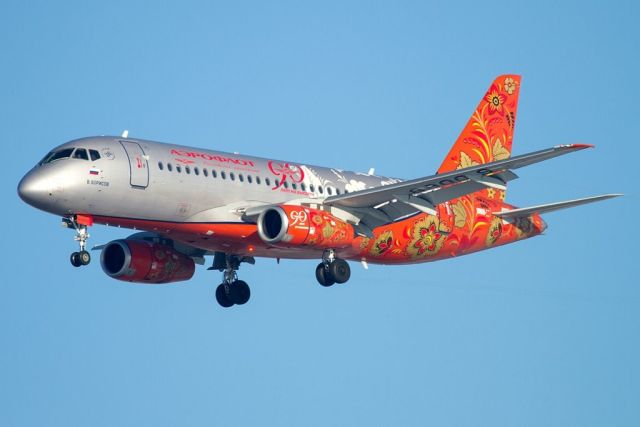
Photo: wikimedia.org You can try your hand at aviation design and offer your own version of the livery for the newest Russian airliner MS-21-310 at the Design Act 2022 competition. Acceptance of applications has been extended until October 16, so you need to hurry up. In support of the competition program, the artists of the ZORAN DESIGN studio offered their own version of painting the aircraft.
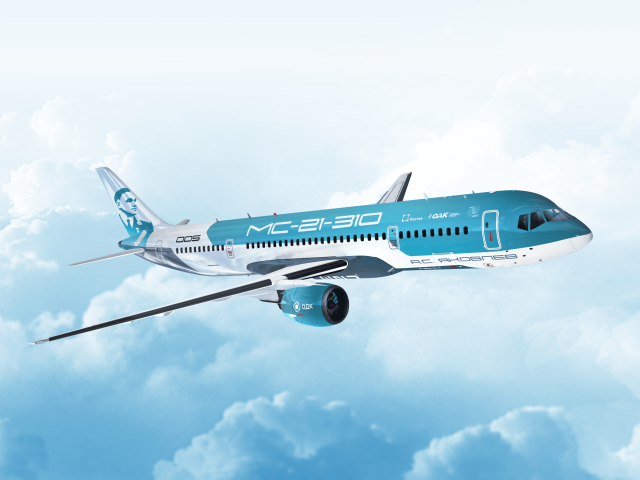
The livery is made in sky-blue memorable tones, the composition is complemented by a stylized image of the outstanding aircraft designer Alexander Sergeevich Yakovlev, whose name is the Engineering Center of the Irkut Corporation, which developed the MS-21.
